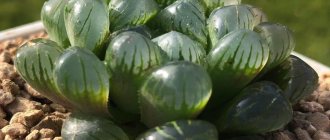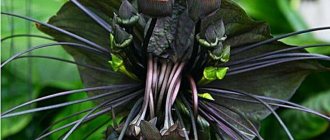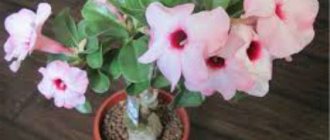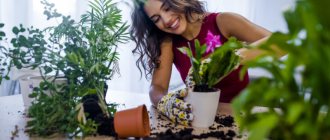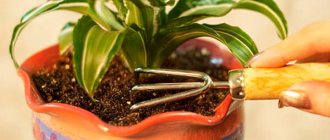Have you noticed that an apartment filled with flowers is usually cozy and beautiful. Peace and tranquility reign there. A variety of flowering and decorative foliage plants on shelves and window sills not only please the eyes, but also warm and soothe the soul. Houseplants are silent helpers, faithful friends and healers of their owners. By absorbing gases and harmful substances from the surrounding air, indoor plants benefit apartment owners and have a positive effect on human health. In addition, they absorb negative auras and release vibes of joy and happiness.
Causes of hazardous substances
Where do harmful toxins and hazardous substances come from in our homes? Firstly, these are the combustion products of gas stoves on which we cook our food. Secondly, these are all kinds of construction and finishing materials - synthetic resin boards, linoleum, polymer wallpaper, plastic panels and others, which emit hazardous substances into the indoor air. Even natural materials begin to deteriorate during the aging process and become dangerous to human health. Televisions, computers, microwave ovens, and smartphones reduce the amount of negative air ions useful for the human body.
Kalanchoe
Kalanchoe is also quite common in homes. This plant loves low air humidity. The culture is quite unpretentious in care. Kalanchoe will become a living air humidifier for rooms, and with the help of its leaves you can quickly restore skin damage.
The leaves are almost 90% liquid. Kalanchoe juice is valued in folk medicine. One of the most popular methods of treatment using this flower is to instill diluted juice into the nasal passages to get rid of a runny nose and prevent the development of colds.
Kalanchoe juice is used in the treatment of dental problems to reduce bleeding gums, as well as for gingivitis, stomatitis and periodontal disease.
Useful indoor plants
It is indoor plants that purify the air from harmful impurities, improve its quality, as well as the quality of life and health of people and animals living in the house. This ability is due to the fact that all plants secrete phytoncides that are destructive to pathogenic bacteria. Moreover, scientists have determined that many plants destroy pathogenic bacteria with their phytoncides much faster than the phytoncides secreted by garlic.
Common myrtle
For example, there will be half as many pathogenic microbes in the room if there is a flower pot with common myrtle there. Lianas, asparagus and Chinese rose also work. Some indoor flowers absorb heavy metals, while others reduce harm from electromagnetic radiation. Still others reduce the negative effect of synthetic materials.
Chlorophytum
Thus, the chlorophytum plant is capable of absorbing formaldehydes, which are harmful to human health, which are released by synthetic materials. If you put activated carbon in flower pots, the properties of chlorophytum as an air purifier will double. We recommend placing pots of chlorophytum in all rooms of your home.
Ivy
Common ivy, sansevieria (mother-in-law's tongue) and aloe also do a good job of purifying the air in your home from toxic compounds, as they release many phytoncides and biologically active substances that can cope with many dangerous microorganisms that have settled in your home.
Indoor Aloe
All gardeners know and appreciate the benefits of indoor aloe plants. Its juice heals wounds, treats colds and purulent inflammations. It is believed that this flower contributes to the prosperity of the inhabitants of the house and their longevity. This is fair, because aloe can survive without water for several years and even bloom.
Pelagonia Fragrant
Phytoncides of many indoor plants have pronounced bactericidal properties. Essential oil plants fill the air with an invigorating aroma and clean the air well indoors. This statement applies to geraniums, fragrant pelargonium, violets, eucalyptus, kalanchoe, lemons, roses and rosemary. All of them secrete volatile phytoncides, which activate the human body’s defenses, improve its well-being, give joy, vigor, and increase performance. Their antimicrobial effect has a particularly beneficial effect on the health of people with weak lungs, diseased bronchi, as well as on the health of people prone to colds and upper respiratory tract diseases.
Red geranium
Interestingly, geranium can serve as a kind of determinant of your health. If the smell of geranium is unpleasant to you, then you are healthy. If you like the smell of geranium, then your nervous system is overexcited, and you need to treat it.
This may be interesting: How to use peat tablets for seedlings
It is advisable to have flower pots with geraniums in the living room and bedrooms. It absorbs dampness, carbon monoxide, destroys staphylococci and streptococci, and cleanses the room of musty air. This flower produces active phytoncides, which have a beneficial effect on the owner’s nervous system in stressful situations and normalize high blood pressure. Scientists have confirmed that the aroma of geranium can ease headaches, relieve fatigue, relieve internal tension, calm you down, and relieve insomnia.
Indoor mint
A pot of mint in the room where the computer is located will fill the room with a fresh aroma, which calms you down and helps you concentrate on work. So, if you, from time to time, take a pot of mint in your hands and smell its aroma, your performance will increase significantly.
Cactus with long needles
It is also useful to place pots of cacti in rooms where there are a lot of electronics. It is believed that cacti, especially those with long needles, kill harmful microorganisms and reduce the ionization of the air that is created by devices with electromagnetic radiation. Don't be afraid to place cacti closer to TV and computer screens. Even if it’s small, there will be some benefit from it.
And cacti are simply irreplaceable where people often quarrel. It is believed that in order for peace and harmony to reign in the house, one must have a cactus - it will cool the anger of the inhabitants of the home and relieve irritation. Magicians recommend placing pots of cacti in places where contact with the outside world is possible - on window sills and at entrance doors - for their ability to fight evil spirits.
Tradescantia whiteflower
If there is a risk of cancer in your home, get a Tradescantia. It is believed that it secretes phytoncides that can suppress cancer in the owner of the flower. The larger the specimen, the thicker its stems, the larger and fleshier its leaves, the greater the strength of the plant.
In addition, Tradescantia is a universal remedy against the evil eye of unkind people. And if there are too many guests in your house, and not all of them are friendly and welcoming, you should buy an indoor Tradescantia flower. You will see that soon evil people will stop visiting your home. After all, this plant is a source of inspiration, joy, it sharpens the owner’s sense of humor, gives him hope and faith in goodness. And yet, it protects its owner from upper respiratory tract infections.
Monstera
Indoor monsteras and philodendrons are protectors of your home from negative energy. Their beautiful straight leaves are sources of upward flows of energy useful for living spaces. In addition, this plant is simply irreplaceable for those who have an eternal mess at home, who take on work that is beyond their strength, who are unable to assess their capabilities, and, if their next venture fails, suffer greatly. Namely, the monstera will help organize and systematize the thoughts of its owner, and bring order to them.
Passionflower
Passionflower, ivies, and wax-leaved vines use other nearby plants as support. They simply need to be grown to cleanse your home of alien negative energy brought from outside. It is also useful to have them in a room where people with nervous system disorders, headaches and insomnia live.
Violet
Growing violets, cyclamen and ferns in the house helps to increase indoor humidity - this is especially valuable where the air is too dry. Ferns are otherwise called indoor ozonizers. These indoor flowers are moisture-loving, and they will share their moisture with the air around them through their leaves.
Money Tree
This may be interesting: Myths, legends and historical facts about roses
They try to have a money tree (crassula) in every home, as it is believed that it contributes to the enrichment of the owner. It is unlikely that you will become rich simply by growing this flower. But a specialist who deals with money transactions and financial problems will help relieve nervous tension and anxiety. Therefore, it makes sense for accountants and financiers who have constant contact with big money to have a money tree for enrichment purposes.
Variegated Dieffenbachia
Variegated diefenbachia and ficus, thanks to their phytoncides, purify the air in a living room from microbes and toxins. We recommend placing pots with these flowers in rooms whose windows face a highway or an industrial area.
Indoor Bonsai
Indoor bonsai is purchased by those who believe in the connection between people and the subtle world of the beyond. It is believed that a bonsai flower, located in the owner’s bedroom, helps him see prophetic dreams, guess the future and read other people’s thoughts. These plants develop the spirituality of the owner and make his feelings sublime. And it is best to practice meditation next to this flower.
Indoor orchids
It is believed that orchids are able to cleanse the most unhealthy organism of its owner. It will put things in order in your head, calm your nerves, and teach you to enjoy life. Moreover, orchids of different colors have different properties. Red orchids fill you with energy and strength, white ones make anyone better, pink ones help to attract the attention of a loved one, yellow ones encourage creativity.
Ficus
A ficus should be purchased and lovingly cared for by those who really want to have a child.
Croton
The beautiful croton is one of the plants with powerful energy. It is believed that it has a beneficial effect on the atmosphere in the apartment and cleanses the space of negative energy. Croton likes everything to be orderly and organized. With its desire for perfection, this flower charges not only its owner, but also his guests. Croton is good to have in a large team where conflicts and misunderstandings are possible. It promotes harmonization in its environment, prevents the commission of rash acts, teaches you to make the right decisions, and has a positive effect on the physical and spiritual health of people.
This may be interesting: Violet at home: benefits, signs and superstitions
There are many more indoor flowers that are not included in this article. For example, on our website you can also read about the beneficial properties of Muraya.
Invisible help
We all come from childhood and those who studied well at school know that plants are our friends. This is forever stuck in my head. After all, plants give us the opportunity to breathe. They are alive and respond to care and care. Scientists even conducted an experiment - they took two flowers - they watered one, took care of it, talked every day, while the other was watered, but scolded and treated roughly. The result was amazing - the first plant began to grow actively, the other withered and died.
In fact, indoor flowers help people. Of course, they will not lend a helping hand in difficult times, they will not talk to us heart to heart. Their help is invisible, but very significant. Plants not only complete the interior, they improve the atmosphere in the house and make life better. And it’s simple – flowers, decorative trees – it’s so beautiful!
Spathiphyllum
Spathiphyllum is famous for its beautiful white flowers. This flower is also called lily.
Such a green pet in the house will help saturate the air with ozone and prevent the appearance of mold fungi. A few plants will do a much better job than artificial air purifiers. Another name for spathiphyllum is “female happiness.” There is a belief that this houseplant, brought as a gift, will help you find long-awaited female happiness. By the way, a great gift idea for a friend.
Lavender
Completing the list of useful indoor plants is fragrant lavender, a well-known remedy that calms the nervous system and helps cope with insomnia and depression. Inhaling the aroma of the flower, you will feel calm and a decrease in your heart rate.
Lavender flowers have a nice color and will brighten up a room.
Indoor plants are not always just decorative elements in the interior of a house. Among the familiar and not so familiar plants there are real healers and helpers in maintaining a healthy microclimate. You don't have to be an experienced gardener or florist to grow them.
Decorative lemon
Among the fruit-bearing domestic trees, decorative lemon can also be distinguished. Lemon tree will become a natural deodorant in the house, filling the room with a pleasant aroma. Lemon leaves release about 85 healthy substances into the air, including phytoncides.
Due to them, memory and mental state improve, headaches are relieved, and the body’s protective properties are increased. Phytoncides spread within a radius of 7 m around the plant. Lemon tree will prevent the appearance of mold and the development of pathogenic microorganisms.
Flowers that bring love and prosperity to the home
Indoor plants for the soul and mood
Aucuba is a symbol of masculinity and fortitude. Helps develop human talents and well-being. Protects the room from negativity. Has an amazing ability to create an atmosphere of family cohesion. Sharks are easily recognized by their dense, glossy leaves with characteristic yellow spots. It grows quickly and bushes well.
Anthurium and spathiphyllum are plants that symbolize the masculine (anthurium) and feminine (spathiphyllum) principles. You need to have both plants in the house. The family will prosper. Anthurium flowers of unusual shape and bright color are used in floristry. They bloom brightly. Red and white colors are symbols of love and fidelity.
Violet is the favorite flower of most gardeners. According to signs, violets bring happiness. Not recommended for families with unmarried girls. There are more than 2000 species of these amazing flowers. Collectors are developing new varieties and adding to their collections.
Chlorophytum brings good luck and tranquility to the home. Our ancestors believed that if you put it in your home, it would attract happiness. If you have problems with your personal life, some troubles arise at work, or you are tired of depression, you should have such a flower.
Hibiscus (Chinese rose) is a symbol of the bright love that can flare up when a rose blooms. Among the superstitions around hibiscus, there are signs that an indoor flower influences a person’s destiny. Some peoples call hibiscus the “flower of death.” But the bad omens did not justify themselves.
Myrtle is a plant that is believed to give eternal youth, beauty and family happiness. It is believed that myrtle will grow in the house when it was planted by the mistress of the house. The name is consonant with the word peace. In ancient times, myrtle was considered a powerful amulet. Women proudly planted this flower and wore the most beautiful clothes.
Geranium brings health to the house, gives comfort and family coziness. Pink geranium is considered a symbol of love, happiness and strong family relationships. In the past, geraniums were given to brides to make them happy. If your daughter has been an old maid for too long, have pink geraniums in the house.
Calathea helps peacefully resolve conflicts and disputes, absorbs negative energy in the house. If you keep Calathea at home, the owners of the flower will achieve their goals and find activities for the soul. Meetings with friends will become more fun and positive. Promotes family unity.
An orchid is a flower that has the energy of love. The presence of this amazing flower creates an aura of well-being. Clears away negativity and brings happiness to the home. Have this beautiful flower in your home. It will delight you with its flowering and unusual appearance. Make sure that the male part of the family has little contact with the flower. Place the beauty where men are least likely to be.
There are many plants that can give you a luxurious look and decorate your home. Growing flowers, as creativity, ennobles a person. Flowers are planted in every home to feel happy. This is joy and positive emotions. And positive emotions are human health.
A coffee tree
Another representative of the home flora is the coffee tree. It has a deodorizing effect, emitting a pleasant coffee aroma around itself. The coffee tree not only creates harmony and comfort in the home, but also bears fruit.
The seeds of these fruits are the same coffee beans that are used to prepare an invigorating drink that has properties that improve brain activity and concentration. It is generally accepted that with the beginning of fruiting, the plant’s energy shield increases. The tree protects the surrounding space from negative energy.
Basil
Growing basil will fill your space with the aroma of the spicy spice, which is great for calming the nervous system.
Just smell the leaf for a couple of minutes. Basil is widely used in cooking as part of salads and seasonings for meat dishes. It's a great idea to combine the health benefits of a houseplant and use it in the kitchen.
Ficus
Known for its cleansing and moisturizing effects on the air. This tree will not only share oxygen, but also rid the microclimate of viruses and harmful substances. The plant cannot be called unpretentious, but its functions are worth it.
Ficus looks great in the interior. It can reach up to 2 m in height and looks exotic and beautiful. In the treatment of folk remedies, ointments, compresses and infusions from ficus are popular. The leaves are used as a pain reliever, including for toothache.
Ficus preparations also have an expectorant effect.
Ficus helps:
- for disorders of the digestive system,
- joint pain,
- respiratory diseases,
- female genital organs,
- and vascular diseases.
Types of harmful compounds in an apartment or house.
- Formaldehyde. Hazard class 2. Sources are varnishes, plastic dishes, fiberboard, chipboard, carpets, tobacco smoke, etc. They can cause cancer, decreased vision, asthma, and allergies.
- Trichlorethylene. It contains various cleaning products, paints, stain removers, and cartridges. It is a strong carcinogen and has a damaging effect on the liver, central nervous system, and kidneys.
- Toluene. Hazard class 3. Sources are varnishes and paints, printers and copiers, wallpaper, solvents. Promotes vision impairment, headaches, causes poisoning of the body and, as a result, nausea and vomiting.
- Acetone. Hazard class 3. Contained in paints and varnishes, solvents. Affects the central nervous system.
- Benzene. Hazard class 2. Also included in paints and varnishes, surfactants, and tobacco smoke. Its action leads to dermatitis, oncology, in particular leukemia, affects internal organs, and causes mental disorders.
- Ammonia. Sources include tobacco smoke and electronic equipment. Is a neurotoxin. Causes chest pain, swelling of the lungs and respiratory tract. With intense exposure, it can lead to respiratory arrest.
bay tree
A unique home spice, bay tree purifies the air and also absorbs excess moisture, so mold does not threaten the room with such a tree. The tree does not require special care, and its dried leaves will serve as a seasoning for hot dishes.
An infusion of laurel leaves has a pronounced antimicrobial effect, which is applicable in the treatment of respiratory diseases. With the help of such decoctions and infusions you can quickly cope with a cough.
Bay leaf is recognized as a natural antiseptic. It is used to disinfect wounds, the oral cavity and in the treatment of skin diseases.

